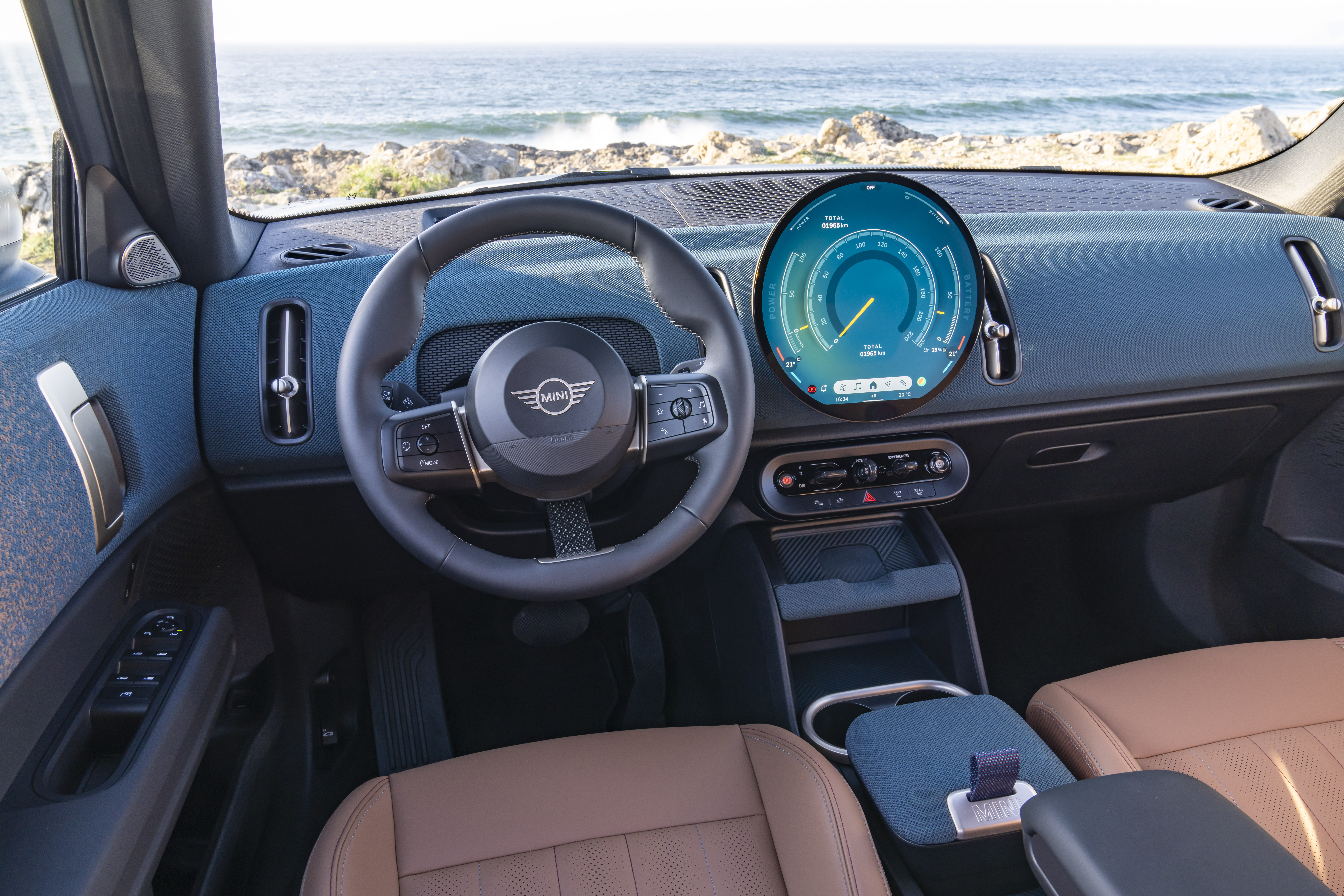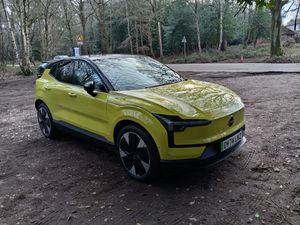First Drive: The Mini Countryman Electric brings fun to the SUV segment
Mini’s Countryman is back for a third generation, and crucially brings electric power for the first time. Ted Welford tries it out.

What is it?

>
If Mini purists were upset by the arrival of the first Countryman as its first SUV back in 2010, there will be even more tears caused by this new third-generation model, due to hit UK roads imminently.
At more than 4.4m long, it’s Mini’s largest car ever by some margin – being 14cm longer than its predecessor, and larger than a Nissan Qashqai It’s been done for a reason, and that’s to make the Countryman more suitable for families, while also leaving space for Mini to introduce a smaller Aceman crossover later in 2024. But has Mini stretched itself too far with this new SUV?
What’s new?

>
It’s been seven years since there was a new Countryman, so the arrival of this new car is a pretty big deal, with no stone left unturned. There are a pair of new petrol engines available, but the stars of the show are two new electric versions – a first for a Countryman. A previous plug-in hybrid model has been discontinued to make way for it.
There are some pretty major advancements inside, too, not least a modern interpretation of the big circular dials of the classic Mini, as the Countryman is the first production car to use a circular OLED display. You’ll see the same look on the firm’s new Cooper hatchback, as well as the upcoming Aceman.
What’s under the bonnet?

>
Though petrol versions of the Countryman remain, it’s the electric models that serve as the headline. There are two available when the electric models arrive in May (petrol cars are already being delivered to customers), which are referred to as the Countryman E and SE.
The entry-level E gets a single front-mounted motor producing 201bhp – enabling an 8.4-second 0-60mph time, but here we’re trying out the SE. This features a second motor enabling four-wheel-drive, and takes the power up to 309bhp, the most of any Countryman. Reaching 60mph from a standstill takes just 5.4 seconds, and it tops out at 111mph.
Each electric Countryman gets the same 64.7kWh battery, allowing for a claimed range of 269 miles with this range-topping model, or 287 miles from the less powerful E. With 130kW DC rapid charging capability, a 10 to 80 per cent charge can take place in just 30 minutes.
What’s it like to drive?

>
The whole feel of the new Countryman is futuristic. There are specific electrical sounds developed for this EV, while with no traditional instrument cluster (albeit you can get an optional head-up display), you’re otherwise reliant on the main touchscreen for the speed – just like an original Mini.
Performance most certainly isn’t lacking with this top-spec electric model, with a very brisk turn of pace if you mash the throttle and plenty of traction courtesy of the all-wheel-drive.
Mini makes a big deal about the ‘go-kart-feel’ of its cars, and though more nimble than plenty of its rivals, there’s no disguising the heft of this larger electric SUV. The ride also isn’t great, feeling bouncy and unsettled over rougher stretches of road. As long as you’re not too fussed about outright pace, we suspect the less powerful ‘E’ model could be a better option.
How does it look?

>
Though still looking unmissable as a ‘Mini’, the new Countryman’s design has evolved the most of any since its initial introduction. There’s no escaping that it isn’t so mini these days as it dwarfs smaller hatchbacks whereas the previous model just looked a bit bloated.
It’s got a more upright appearance than its predecessor too, with a flat front end and new headlights that are no longer in the traditional round shape. Speaking of lights, top-spec Countrymans are also available with configurable LED signatures – most noticeable at the rear where there are new signatures and sequences you can pick between, but all based around the firm’s renowned Union Jack pattern. It feels like a digital Mini in more ways than one, that’s for sure.
What’s it like inside?

>
Mini’s gone all out with changing the Countryman’s interior, with the main difference being that new OLED touchscreen. It’s especially thin, but the clarity is exceptional. The features it offers are impressive, though it can be tricky to use at times, with small climate control buttons hard (and distracting) to use on the move.
The overall interior of the Countryman is bright and different in a good way. Features such as a turn switch to start the car are cool nods to the original, while a knitted dashboard and door cards are a refreshing change to usual plastics and fabrics, which display cool patterns depending on the spec.
In terms of space, this Countryman is a noticeably bigger car inside, with more scope than ever to use this as family transport. Rear seat space could still be a bit tight for taller adults but at 460 litres, the boot is a good size but by no means leads the way for interior roominess in its class.
What’s the spec like?

>
The Countryman line-up is split into three versions – Classic, Sport and Exclusive. All come with with plenty of features, such as LED lights, adaptive cruise control and an electric boot.
The Classic gets more simple styling with smaller silver alloy wheels, with the Sport getting big alloy wheels and black styling inspired by the John Cooper Works. In the middle sits an ‘Exclusive’ version which gets more premium elements such as a recycled knitted dashboard and stylish silver accents.
In terms of pricing, the standard electric model starts from £42,080, but it’ll be £45,000 by the time it’s in a trim you want. The range-topping electric version is quite a bit more expensive, starting from £47,180, but it will be more than £50,000 by the time you’ve chosen it in the more stylish Sport or Exclusive guise. It’s quite a lot more expensive than mainstream rivals like the Hyundai Kona Electric.
Verdict
Mini has always been a brand that’s never been shy of standing out from the crowd and this Countryman continues to channel that philosophy. Though using plenty of BMW bits (we drove it back-to-back with the mechanically similar BMW iX2), it feels like a completely different package, and one unique to its rivals.
The interior and technology available are ahead of many competitors and helps it to offer a sense of fun and character that is often lost with electric SUVs. Though fairly expensive, and there are caveats over ride quality, this new Countryman is one of the better cars in its class, and ideal for those who don’t want to let the switch to electric spoil their fun.





